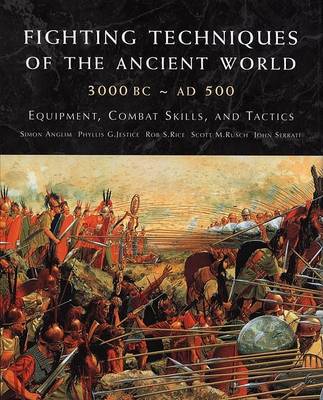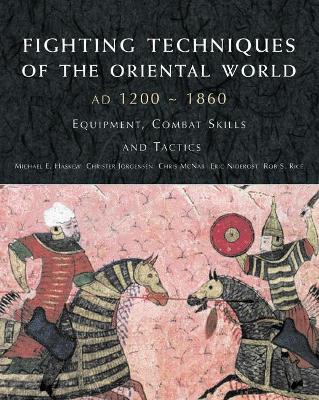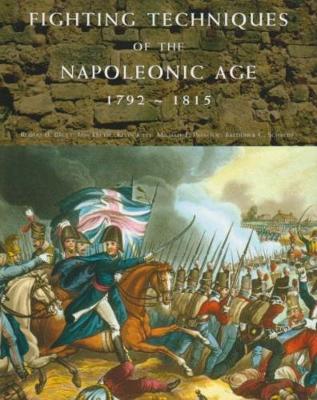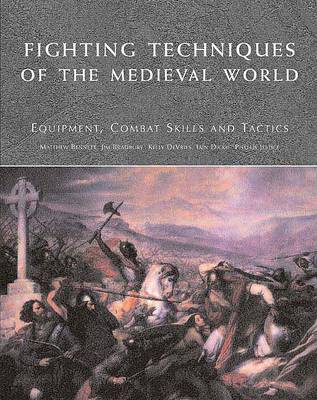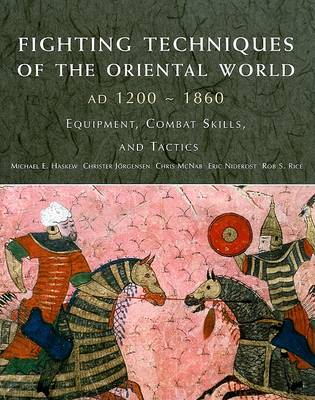Fighting Techniques
1 primary work • 6 total works
Book 1
Fighting Techniques of the Ancient World (3000 B.C. to 500 A.D.)
by Dr James R Ross, Rob S Rice, Phyllis G. Jestice, Scott Rusch, Professor John Serrati, Simon Anglim, and Scott M Rusch
Published 1 January 2003
Fighting Techniques of Naval Warfare
by Iain Dickie, Phyllis Jestice, Christer Jorgensen, Rob S Rice, and Martin J Dougherty
Published 9 June 2009
An illustrated exploration of how sea battles have been fought throughout history explores key tactics and strategies while surveying how the development of various weapons impacted naval warfare.
Fighting Techniques of the Oriental World 1200 - 1860
by Rob S Rice, Eric Niderost, Chris McNab, Christer Joergensen, and Michael E Haskew
Published 15 August 2008
This book describes the fighting techniques of the armies of East Asia, from the age of the Mongol expansion in the thirteenth century to the Anglo–Chinese Opium Wars of the mid-nineteenth century. The book explores the tactics and strategy required to win battles with the technology available, and illustrates how the development of such weapons changed the way battles were fought.
In the first chapter, the book considers the key role of infantry at the battles of Tumu (1449), Maymyo (1767), Kawanakajima (1561) and Nagashino (1575). The uses and merits of spearmen and archers are explored, and the revolutionary impact of gunpowder weapons examined. The second chapter looks at the creation of the cavalry army by the Mongols and the crucial development of the horse archer as a key battlefield element at encounters such as Vochan (1277). Using examples such as Kalka River (1223) and Hansando (1592), the third chapter discusses the command structures and development of new technologies and tactics to defeat seemingly more numerous foes. In an era of fortifications, the fourth chapter examines the employment and development of siege weapons, from the`Crouching Tiger’ catapult to advanced mortars, at sieges such as Xiangyang (1267), Chinju (1592) and Osaka (1615). The final chapter analyzes the development of naval warfare, examining key encounters at Lake Poyang (1363), Sacheon (1592) and Wusung River (1842).
Using specially-commissioned colour maps and black-and-white artworks to illustrate the battles, equipment and tactics of the region, Fighting Techniques of the Oriental World explores the methods by which the great commanders– such as Genghis Khan, Oda Nobunaga and Admiral Yi Sun – won battles and campaigns, and why others were less successful. The book is an essential companion for anyone interested in warfare in East Asia.
In the first chapter, the book considers the key role of infantry at the battles of Tumu (1449), Maymyo (1767), Kawanakajima (1561) and Nagashino (1575). The uses and merits of spearmen and archers are explored, and the revolutionary impact of gunpowder weapons examined. The second chapter looks at the creation of the cavalry army by the Mongols and the crucial development of the horse archer as a key battlefield element at encounters such as Vochan (1277). Using examples such as Kalka River (1223) and Hansando (1592), the third chapter discusses the command structures and development of new technologies and tactics to defeat seemingly more numerous foes. In an era of fortifications, the fourth chapter examines the employment and development of siege weapons, from the`Crouching Tiger’ catapult to advanced mortars, at sieges such as Xiangyang (1267), Chinju (1592) and Osaka (1615). The final chapter analyzes the development of naval warfare, examining key encounters at Lake Poyang (1363), Sacheon (1592) and Wusung River (1842).
Using specially-commissioned colour maps and black-and-white artworks to illustrate the battles, equipment and tactics of the region, Fighting Techniques of the Oriental World explores the methods by which the great commanders– such as Genghis Khan, Oda Nobunaga and Admiral Yi Sun – won battles and campaigns, and why others were less successful. The book is an essential companion for anyone interested in warfare in East Asia.
Fighting Techniques of the Napoleonic Age 1792-1815
by Robert B. Bruce and Iain Dickie
Published 15 April 2008
The book is divided into five chapters, covering the main elements of Revolutionary and Napoleonic warfare: infantry, cavalry, generalship, artillery and siege warfare and naval combat. Each chapter features four battles to demonstrate the strengths, pitfalls and characteristics of the style of warfare. Napoleonic techniques are notorious for being highly fluid and flexible, combining new and ancient techniques to seal the fate of “La Grande Armee” as the one of the most charismatic and fierce armies ever known.
In the first chapter, the book considers the crucial role of infantry by examining the battles of Rivoli (1797), Maida (1806), Auerstadt (1806) and Waterloo (1815). The uses and merits of light infantry, elite infantry formations (such as the Imperial Guard), line versus column, and the use of defensive squares, are explored.
The second chapter examines the importance of cavalry as both reconnaissance and shock troops, with accounts of famous actions by elite cavalry at Somosierra (1808) and Borodino (1812) turning the tide of the battle. Using examples such as Austerlitz (1805) and Wagram (1809), the third chapter discusses the command structures and tactics of the era and investigates how the great generals were able to combine cavalry, infantry and artillery effectively on the battlefield. The fourth chapter looks at the employment of massed artillery as a key component on the battlefield– for example, at Friedland (1807) – the revolutionary use of horse artillery and the siege tactics employed at great sieges such as Badajoz (1812) and Hamburg (1813). The final chapter explores the role of naval warfare, examining key encounters at the Nile (1798), Trafalgar (1805) and Lake Erie (1813).
Using specially commissioned colour and black-and-white artworks to illustrate the battles, equipment and tactics of the era, Fighting Techniques of the Napoleonic Age explores the methods by which the great commanders of the era– such as Napoleon, Wellington and Nelson – won battles and campaigns, and why others were less successful. The book is an essential companion for anyone interested in warfare in the Napoleonic era.
In the first chapter, the book considers the crucial role of infantry by examining the battles of Rivoli (1797), Maida (1806), Auerstadt (1806) and Waterloo (1815). The uses and merits of light infantry, elite infantry formations (such as the Imperial Guard), line versus column, and the use of defensive squares, are explored.
The second chapter examines the importance of cavalry as both reconnaissance and shock troops, with accounts of famous actions by elite cavalry at Somosierra (1808) and Borodino (1812) turning the tide of the battle. Using examples such as Austerlitz (1805) and Wagram (1809), the third chapter discusses the command structures and tactics of the era and investigates how the great generals were able to combine cavalry, infantry and artillery effectively on the battlefield. The fourth chapter looks at the employment of massed artillery as a key component on the battlefield– for example, at Friedland (1807) – the revolutionary use of horse artillery and the siege tactics employed at great sieges such as Badajoz (1812) and Hamburg (1813). The final chapter explores the role of naval warfare, examining key encounters at the Nile (1798), Trafalgar (1805) and Lake Erie (1813).
Using specially commissioned colour and black-and-white artworks to illustrate the battles, equipment and tactics of the era, Fighting Techniques of the Napoleonic Age explores the methods by which the great commanders of the era– such as Napoleon, Wellington and Nelson – won battles and campaigns, and why others were less successful. The book is an essential companion for anyone interested in warfare in the Napoleonic era.
Fighting Techniques of the Medieval World
by Matthew Bennett, Jim Bradbury, Professor of History Kelly DeVries, Iain Dickie, Phyllis Jestice, Stephen Bennett, Devries, and Jestice
Published 27 December 2005
Fighting Techniques of the Oriental World
by Michael E Haskew, Christer Joregensen, Chris McNab, Eric Niderost, and Rob S Rice
Published 9 December 2008
